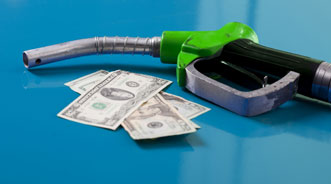Experian Explores Impact of $1 Gas Price Increase; Offers Dealers Advice

As gas prices remain high after reaching over $4 in 2012, consumers’ vehicle preferences are bound to shift. And according to Energy Information Administration data released Monday, the average price of regular grade gasoline (all formulations) increased by eighteen cents from $3.36 to 3.54 this past week.
Experian Automotive looked into potential buyer reaction to significant spikes in gas prices in a new study that covers the impact of rising fuel prices on various vehicle segments over a five-year period.
Apparently, the research showed that there was “a direct correlation between fluctuations in gas prices and changes in market share for different types of vehicle sales.”
The study found, not surprisingly, that the biggest market share gainer was the small-car economy segment.
In fact, Experian explained, “with approximately 18,000 new vehicle dealers in the country, these findings show that on average, a $1 spike in a gallon of fuel means every dealer in the nation could see one more small-car economy vehicle sale approximately every three months.”
Of course, as gas prices rise, consumers are bound to research gas sippers, but the amount this segment is affected brings some more potential market developments to light, as well.
In the study, the small-car economy segment rose by 0.7 percent for every dollar increase in fuel price.
“This means that if gas prices increased by $1, in an average month with 1 million unit sales, the small-car economy segment volume would increase by 7,000 units,” officials explained.
But as interest in gas sippers rise, the larger segments may bear the full brunt of increasing fuel rates.
The same $1 price increase would cause the full-size pickup truck segment to lose 0.5 percent market share, according to the study.
“Everyone knows that a rise in fuel prices changes consumer purchasing behavior," said Erik Hjermstad, lead analytic consultant for Experian Automotive. “But, the question is, how are various segments influenced by a specific rise in fuel prices? In some cases, the shift in market share can be significant.”
Interestingly, though the study found a buyer rise in interest in smaller vehicles, hybrid and electric vehicles didn’t see much of a bump.
In fact, sales of hybrid trucks actually fell by 0.1 percentage points, according to the study scenario.
Hybrid cars went up by just 0.2 percentage points, and electric vehicle sales were up by only 0.1 percentage points, officials added.
“While these vehicles are still likely to be solutions to long-term transportation challenges, currently, there is low market demand, even when gas prices increase significantly,” they explained.
Hjermstad also offered some insight into what dealers may experience if gas prices spike in 2013.
“While higher fuel prices tend to get people talking, actual consumer behavior is affected primarily at the vehicle segment level. What this means for dealers is not necessarily a change in number of vehicles sold, but rather a shift in which vehicles people are buying,” he said.
“Smaller cars definitely pick up market share, and full-size pickup trucks and SUVs definitely see a downturn. But, the magnitude of these shifts is also a function of how quickly gas prices increase or decrease.”
Hjermstad also encouraged dealers to closely monitor their market to gain a better understanding of the vehicle sales in their region. He contends this will help dealers will be in a better position to react to fuel price changes, “making better business decisions that keep sales up and inventory at the right level to meet demand.”
Continue the conversation with Auto Remarketing on both LinkedIn and Twitter.


